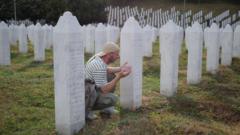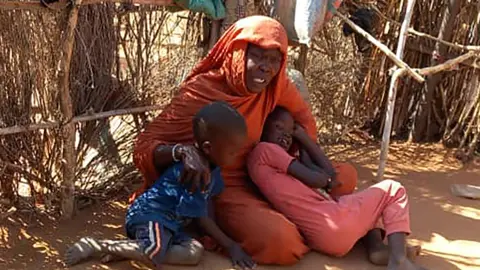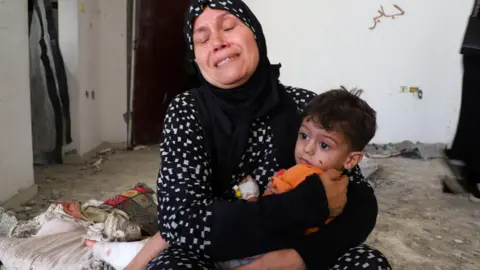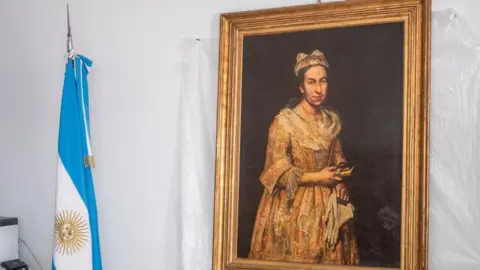The silence is violently interrupted as a harrowing scream pierces the air. This chilling moment, part of the world premiere of *Flowers of Srebrenica* at Sarajevo's War Theatre, encapsulates the complex journey of remembrance in Bosnia and Herzegovina thirty years after the massacre that claimed over 8,000 Bosnian men and boys in July 1995. The play unfolds the grim aftermath of the massacre, an event that not only devastated the lives of thousands but also left a fragmented society grappling with unresolved trauma for decades.
During the tragic siege, Bosnian-Serb forces, led by General Ratko Mladić, overtook Srebrenica, where thousands of Bosniaks had sought refuge believing they were safe under UN protection. In a betrayal of trust, Dutch soldiers turned a blind eye as Mladić orchestrated the systematic execution of victims. Body parts were concealed in mass graves, and future exhumations led to a disheartening quest for families still searching for closure. DNA identification has offered some solace for the bereaved, allowing them to bury their loved ones at the Potočari Cemetery.
Despite this, Bosnia remains deeply divided. The same audience applauding the powerful performance in Sarajevo may find their counterparts in Republika Srpska dismissing Srebrenica's narrative altogether, perpetuating a climate of denial. Selma Alispahić, lead actress and former refugee, highlights the exhaustion of continually proving the truth in the face of political manipulation that safeguards war criminals.
The Dayton Peace Agreement ended the war just four months after the massacre, but it solidified ethnic divisions, creating a complex political landscape in which power is bifurcated among various ethnic groups. Recently, legislation by Republika Srpska's government has pushed back against national institutions, further testing the fragile unity established through the peace agreement. High Representative Christian Schmidt's attempts to annul these moves sparked conflict, leading to accusations of wanting to rewind the clock to a past filled with strife.
In the heart of Sarajevo, the commitment to remembrance is palpable as hundreds gathered to honor the remains of recently identified victims. Yet just a short distance away in East Sarajevo, the public acknowledgment of the massacre is conspicuously absent, reflecting the stark divisions between entities.
With rising ethnic tensions, voices like Mirela Osmanović's resonate through the collective memory as she expresses deep concern over the anxiety felt in the region. She, like many others, fears a regression to the tumultuous period of the early 1990s, where safety and unity were mere illusions.
For Bosnian-Serb leader Milorad Dodik, the orchestration of these tensions appears part of a broader strategy to maintain power, threatening the prospects for genuine healing and reconciliation. As remnants of the past continue to haunt Bosnia, the interplay of memory, politics, and the courage to confront history remains the cornerstone of the nation’s path toward a sustainable future.




















